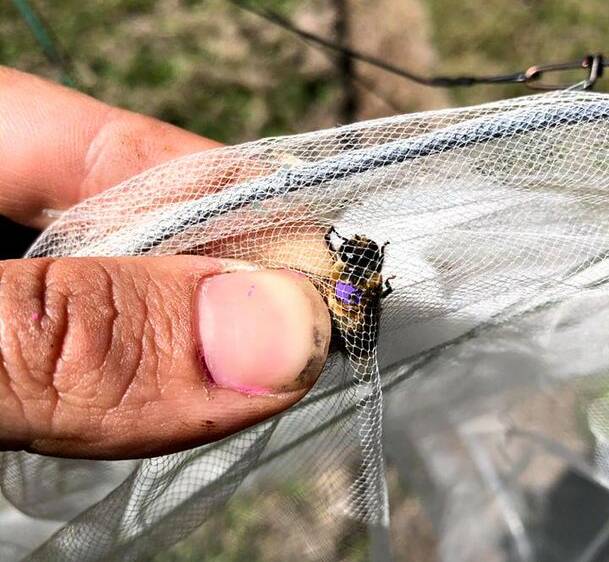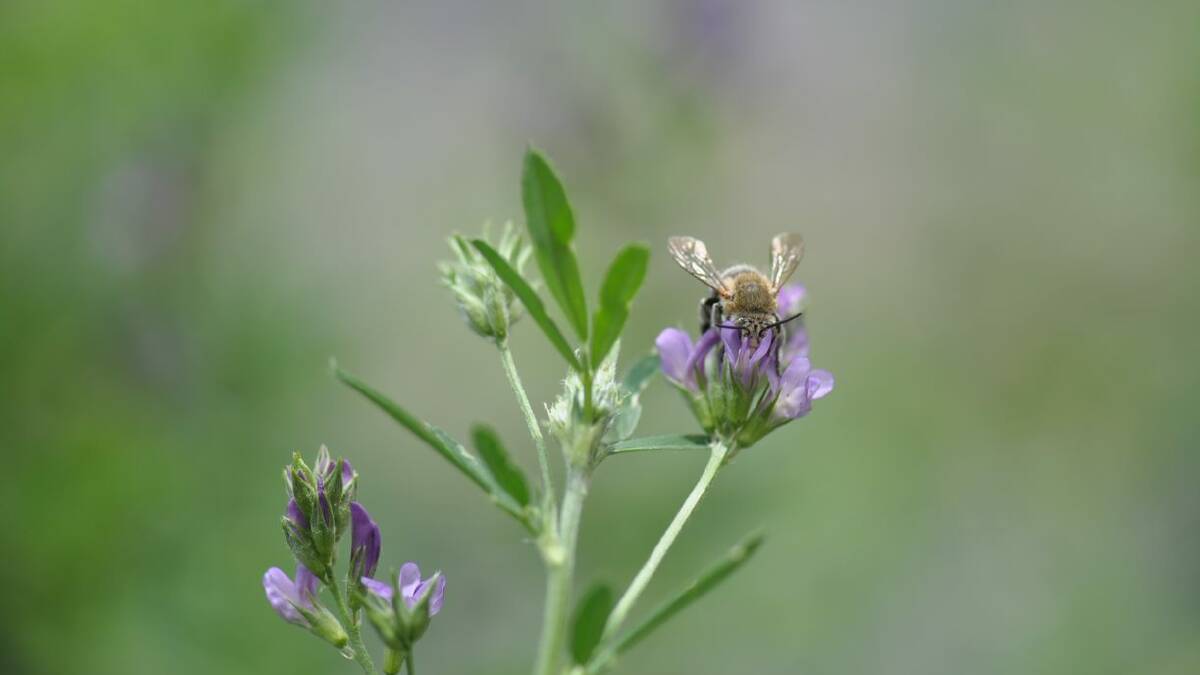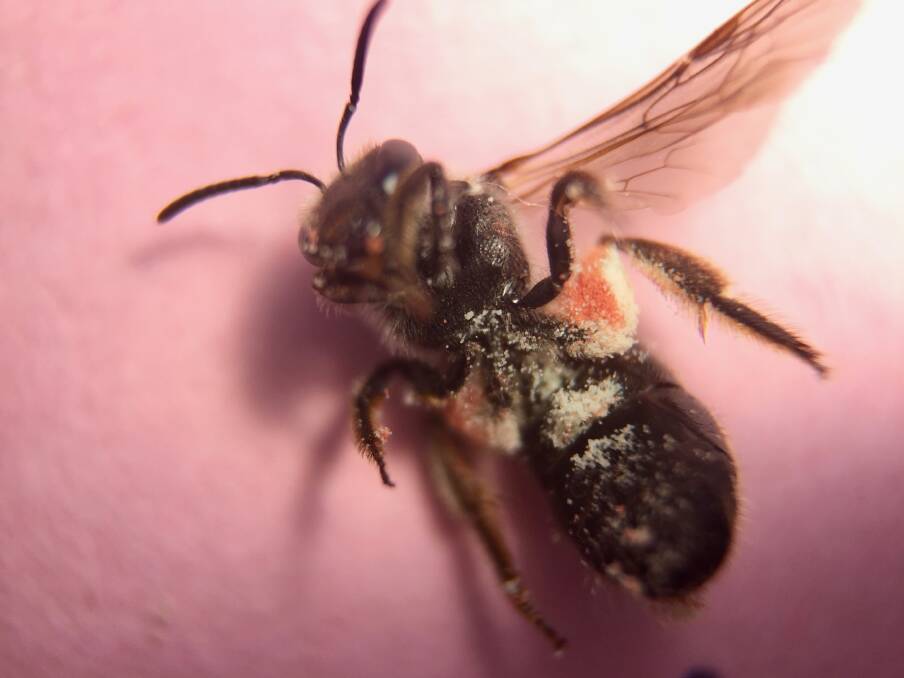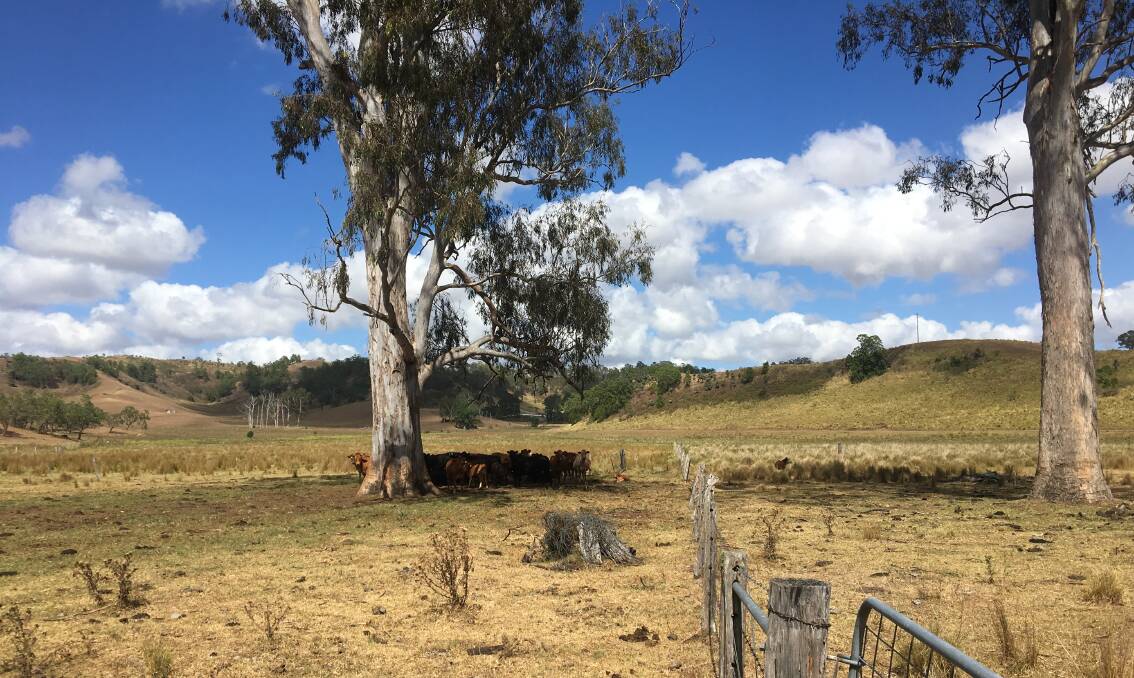
The major role of native bees in the Australian cropping sector has not been fully understood until now.
A groundbreaking report released by AgriFutures on Monday shows that native bees can rival introduced honey bees in the pollination stakes.
And the report has highlighted it could be a race against time to make sure the environment for native bees is preserved close to farms as introduced honey bees face the worldwide threat of the varroa mite, a threat native bees are largely immune to.
One of the lead researchers in the report, Dr Katja Hogendoorn, a researcher and entomologist from the University of Adelaide, says the report details for the first time how native bees (and honey bees) can dramatically improve crop production, from yield to quality, and how to encourage their presence.
The report found that only about 200 of the 1650 or more of native bee species will actually move into crops to help with pollination, Dr Hogendoorn said.
Bees can vastly boost a crop's production, including canola, in that crop helping pollinate flowers at the same time so the seed grows uniformly within the crop, getting rid of green seed for harvest, leaving a higher oil dividend. They also can help grow a more rounded apple (preferred by the market), such is their pollinating wizardry.
Faba bean production could be improved by 30 per cent by pollination from bees, she said.
Native bees can live and thrive in a crop, especially in stubble, as most native species will nest in the ground. And there can be nothing better than leaving a tree in the paddock - this will boost the crop that surrounds it no end by giving shelter or a home for the bees.
"It is actually more productive leaving a tree in the paddock," she told The Land.
"We need to encourage all bees," she says.
"Bees are very versatile. You can leave bare ground near the crop's edge where they can nest or they will nest in stubble or in other parts of the crop. But they need food in the landscape, native plants nearby on which they can feed, so planting flowering, quicker growing native bushes and trees near a paddock is vital."

The report's main findings were:
- Annually, crop pollinators contribute about $14 billion to the Australian economy with more than 35 crops depending on pollination.
- It's not just honey bees that are pollinating crops, with native bees and other insects acting as important pollinators.
- In order to secure pollination, growers should consider how nearby vegetation can attract and retain pollinators.
- A series of resources including an interactive online tool have been launched to help growers design their crops for most secure and effective pollination.
The project, Securing Pollination for more Productive Agriculture: Guidelines for effective pollinator management and stakeholder adoption, was delivered as part of the Federal Government's Department of Agriculture, Water and the Environment Rural R&D for Profit program.
It assessed the contribution of pollinators to nine crop species - apple, avocado, blueberry, canola, lucerne, macadamia, mango, raspberry, and watermelon.
Dr Hogendoorn said in a release: "Regardless of crops or region, researchers found that diversity in crop pollination depends on the presence of flowering plants and nesting opportunities in the landscape".
"In some respects, the pollinators respond differently to the landscape. For example, most native crop pollinating bees benefit from patches of open soil, while feral honey bees rely on old Eucalyptus trees for nesting hollows. In less forested areas, the densities of feral honey bees are not high enough to provide all the pollination required. But all pollinators need food from the landscape when the crop is not in flower."

Dr Hogendoorn explained floral support should be available nearly year-round, in close proximity to the crop, to enhance the health and diversity of pollinators and ensure that pollination services remain reliable and resilient into the future.
"Overseas, mixes of wild flowers are increasingly used in crop edges along road-sides to provide support for bees and other pollinators. Our planting advice is tailored to Australian pollinators.
"Our advice is to plant a wide range of local, easy to grow native species. Planting designs can focus on understorey species, hedgerows or whole area plantings. These plantings also convey a range of other benefits for farm productivity," Dr Hogendoorn said.
AgriFutures Australia General Manager, Business Development Michael Beer, said "safeguarding pollination served the interest of both the growers and consumers of pollination-dependent crops".

"This project aimed to secure and enhance crop pollination services by designing ways to support pollinator density and diversity to create a resilient pollinator portfolio. This research will safeguard the current and future pollination for the nine crops included in the study as well as the dozens more that rely on pollination services," said Mr Beer.
Also read:
"As part of the Rural R&D for Profit program, this project is about driving real outcomes for farmers. By following the guidelines for more efficient, secure pollination, growers can enhance pollinator diversity, which decreases the risk associated with pollinator declines and reliance on a single species."
AgriFutures said as a result of the project, crop and landscape management strategies and resources have been developed for growers to adopt, with many already implementing these management strategies.
Firstly, an online interactive tool - Pollin8, has been developed, targeted at apple, canola and lucerne crops in South Australia, due to their pollinator dependency, which allows growers to plan for revegetation.
"Pollin8 allows growers to run simulations on revegetating the area around their farms to support pollinators and how that affects their crop. It also allows growers to design planting strategies using a Revegetation Planting Guide," Dr Hogendoorn said.
"A Native Bee Food Calendar also sets out which plant species provide food for native bees throughout the seasons in the Adelaide and Mount Lofty Ranges Region."
Additionally, a free online guide that lists the pollinators across all crops studied is now available, AgriFutures said.
AgriFutures said it will continue to work with industry groups to extend research findings, strategies and tools to growers and stakeholders.
- The project involved collaboration between Australia's most knowledgeable bee and pollination researchers from the University of Adelaide (UoA), Australian National University (ANU), University of New England (UNE) and University of Sydney (USYD), from June 2016 to February 2021.
Love agricultural news? Sign up for The Land's free daily newsletter


